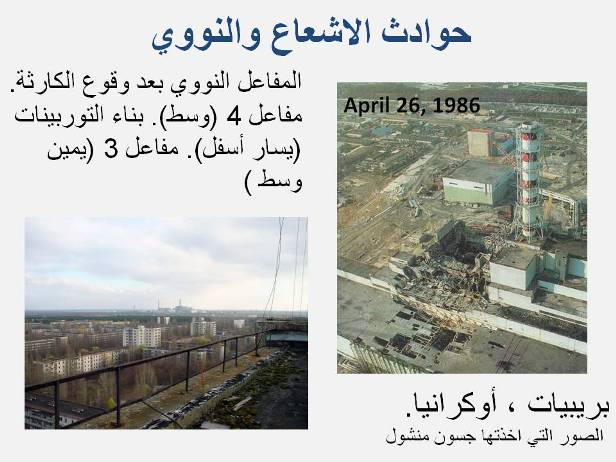| front |1 |2 |3 |4 |5 |6 |7 |8 |9 |10 |11 |12 |13 |14 |15 |16 |17 |18 |19 |20 |21 |22 |23 |24 |25 |26 |27 |28 |29 |30 |31|32 |33 |34 |35 |36 |37 |38 |39 |40 | 41 |42 |43 |44 |45 |46 |47 |48 |49 |50 |51 |52 |53 |54 |review |
 |
Nuclear and radiation accidents may be of various types The worst nuclear accident is the Chernobyl disaster which occurred in 1986 in Kiev, Ukraine. Radioactive fallout from the accident concentrated near Belarus, Ukraine and Russia and at least 350,000 people were forcibly resettled away from these areas. After the accident, "traces of radioactive deposits unique to Chernobyl were found in nearly every country in the northern hemisphere". The plume drifted over large parts of the western Soviet Union, Eastern Europe, Western Europe, and Northern Europe. Rain contaminated with radioactive material fell as far away as Ireland. Large areas in Ukraine,Belarus, and Russia were badly contaminated, resulting in the evacuation and resettlement of over 336,000 people. According to official post-Soviet data, about 60% of the radioactive fallout landed in Belarus. The accident raised concerns about the safety of the Soviet nuclear power industry as well as nuclear power in general, slowing its expansion for a number of years while forcing the Soviet government to become less secretive. The countries of Russia, Ukraine, and Belarus have been burdened with the continuing and substantial decontamination and health care costs of the Chernobyl accident. It is difficult to accurately quantify the number of deaths caused by the events at Chernobyl, as over time it becomes harder to determine whether a death has been caused by exposure to radiation. The 2005 report prepared by the Chernobyl Forum, led by the International Atomic Energy Agency (IAEA) and World Health Organization (WHO), attributed 56 direct deaths (47 accident workers and nine children with thyroid cancer) and estimated that there may be 4,000 (questioned, could be higher) extra cancer deaths among the approximately 600,000 most highly exposed people. Although the Chernobyl Exclusion Zone and certain limited areas remain off limits, the majority of affected areas are now considered safe for settlement and economic activity Twenty-nine major nuclear accidents have occurred since the Chernobyl disaster, and 71 percent of all nuclear accidents (45 out of 63) occurred in the United States, challenging the notion that severe nuclear accidents cannot happen within the United States or that they have not happened since Chernobyl. |